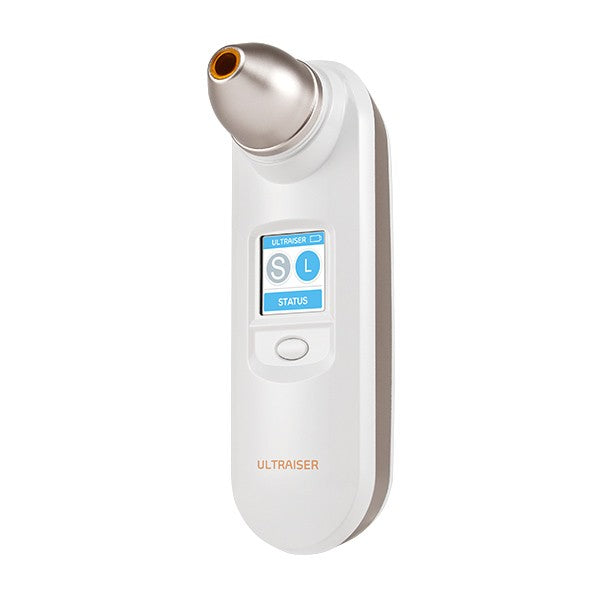What is a HIFU Facial Treatment?
HIFU (High-Intensity Focused Ultrasound) facial is a non-invasive cosmetic procedure that uses ultrasound technology to tighten and lift the skin on the face and neck. It is also known as ultrasound facelift or ultrasound skin tightening.
During a HIFU facial treatment, a handheld device is used to deliver focused ultrasound energy to specific layers of the skin. This energy heats up the targeted tissue, stimulating the production of collagen, which is a protein responsible for skin firmness and elasticity. By promoting collagen production, HIFU facials can help improve the appearance of sagging skin, wrinkles, and fine lines.
One of the advantages of HIFU facials is that they can target deeper layers of the skin without affecting the surface layer. This means that there is no damage to the outer skin, and there is minimal downtime associated with the procedure.
A HIFU facials treatment can take anywhere from 30 minutes to an hour, depending on the areas being treated. While some people may see immediate results, the full effects of the treatment usually develop over several weeks as collagen production increases.
How does HIFU Facial work?
HIFU facial works by using ultrasound energy to target specific layers of the skin, promoting collagen production and tightening the skin. Here's a breakdown of how the procedure typically works:
-
Preparation: The treatment area is cleansed, and a conductive gel may be applied to the skin to enhance the transmission of ultrasound energy.
-
Ultrasound device: The practitioner uses a handheld device that emits focused ultrasound waves. This device has a smooth surface and is moved across the skin in a systematic pattern.
-
Energy delivery: The device delivers focused ultrasound energy to precise depths beneath the skin's surface. The energy is delivered in rapid pulses, heating the targeted tissue without damaging the outer layer of the skin.
-
Heating and stimulation: The focused ultrasound energy generates heat in the targeted tissue, causing thermal coagulation points. These points stimulate the body's natural healing response and trigger the production of new collagen fibers.
-
Collagen remodeling: Over time, the newly formed collagen fibers gradually tighten and lift the skin, leading to improved firmness and reduced sagging.
-
Treatment areas: The HIFU facial can be performed on various areas of the face and neck, including the forehead, eyebrows, cheeks, jawline, chin, and neck, depending on individual needs and concerns.
-
Multiple passes: To ensure thorough treatment, the practitioner may make multiple passes over each treatment area, ensuring that the entire area receives the desired level of energy.
-
Post-treatment care: Once the procedure is complete, there is usually no downtime, and individuals can resume their normal activities. Some temporary effects like mild redness, tingling, or swelling may occur, but they typically subside within a few hours or days.
It's important to note that the exact process may vary depending on the specific HIFU device used and the expertise of the practitioner. It's recommended to consult with a qualified professional who can assess your needs and provide personalized treatment guidance.
History of HIFU Facial
HIFU technology has been used in medical applications for several decades before its introduction to the field of aesthetics. The use of focused ultrasound for therapeutic purposes can be traced back to the 1940s when it was initially employed for treating neurological disorders.
However, the application of HIFU in facial rejuvenation and skin tightening is a relatively recent development. The aesthetic use of HIFU technology began to gain attention in the early 2000s as researchers explored its potential for non-invasive facelifts.
The first HIFU device specifically designed for facial rejuvenation received clearance from the United States Food and Drug Administration (FDA) in 2009. This approval allowed it to be marketed for the treatment of skin laxity on the eyebrows, chin, and neck.
Over the years, HIFU facial treatments have gained popularity due to their non-invasive nature and potential to stimulate collagen production, resulting in skin tightening and lifting effects. HIFU technology has since evolved, with various manufacturers introducing their own HIFU devices and treatment protocols.
These advancements have led to improved precision, efficacy, and safety of HIFU facials. Nowadays, there are different brands and models of HIFU devices available in the market, each offering specific features and customization options to cater to individual patient needs.
It's worth noting that research and development in the field of aesthetic HIFU treatments are ongoing, with continuous efforts to refine the technology and enhance treatment outcomes. As a result, the HIFU facial procedure continues to evolve and improve with time.


